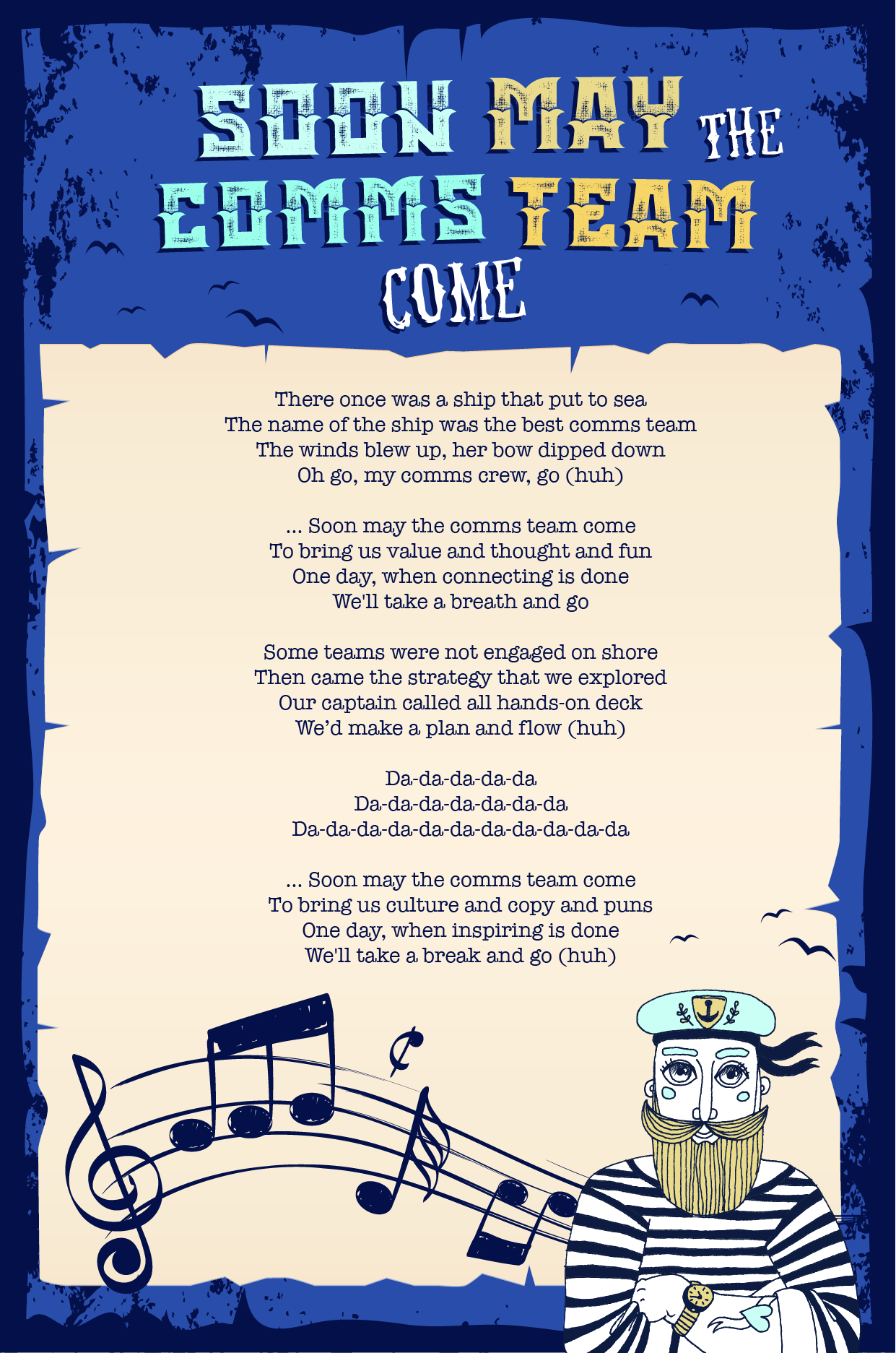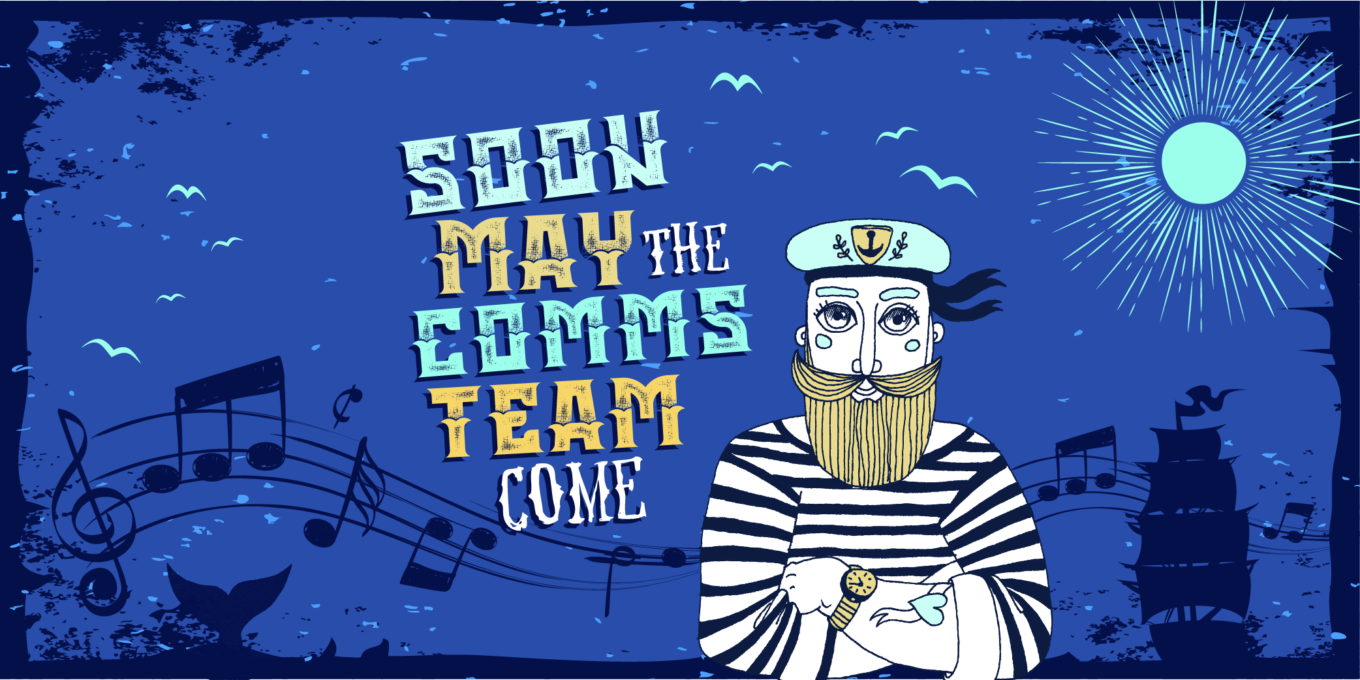Strong leadership, teamwork and storytelling sing through any sea shanty, especially on board the Billy of Tea!
Sea shanties are generally constructed as call and response songs. With wind in their lungs and beneath their sails, the leader keeps the group going with a reliable rhythm, steadfast spirit and a trusted tempo. Whether you’re on shore or land, having a reliable leader is an integral part of any successful team.
At the heart of every song, you’ll also find a story. In the comms world, we know that storytelling is instrumental to building connections within any team or community – from tales of rough tides to lyrics about love and loss, these stories can be deeply personal – showing there’s strength in openness and vulnerability.
Chanting a catchy chorus while catching fish has a rich and meaningful history which remains a big part of the trade. Like all good internal communications, shanties boost morale, instill trust and get people working together in harmony.
A viral voyage
The Fisherman’s Friends film – a true story about a band of fishermen who were signed by Universal Records and climbed the charts – shone a spotlight on sea shanties back in 2019.
Since then, the sea shanty trend took the internet by storm when Scottish singer Nathan Evans covered Wellerman – a sea shanty about a crew who are hunting a whale, hoping a “Wellerman” will arrive and bring them goodies.
It’s perhaps unsurprising that this craze took off during the pandemic, a time which was full of challenges, anxiety and uncertainty, often described as a storm which we all weathered together, but in different boats.
Staying tuned into how people in your organisation are feeling and what struggles they may be facing helps to keep your comms sensitive, relevant and personalised.
Comms crew remix
If someone were to write a sea shanty about your comms crew, what would it say?
Maybe our version sings true for you too… Although, we should have kept the bit about needing tea, and rum!

Like sopranos and tenors, captains and crew members, everyone in your team will have their own strengths and weaknesses. It’s important we take the time to appreciate and recognise what they are to help create a sense of belonging, keep spirits high and make sure everyone’s singing to the same tune.
By Lauren Castle
















